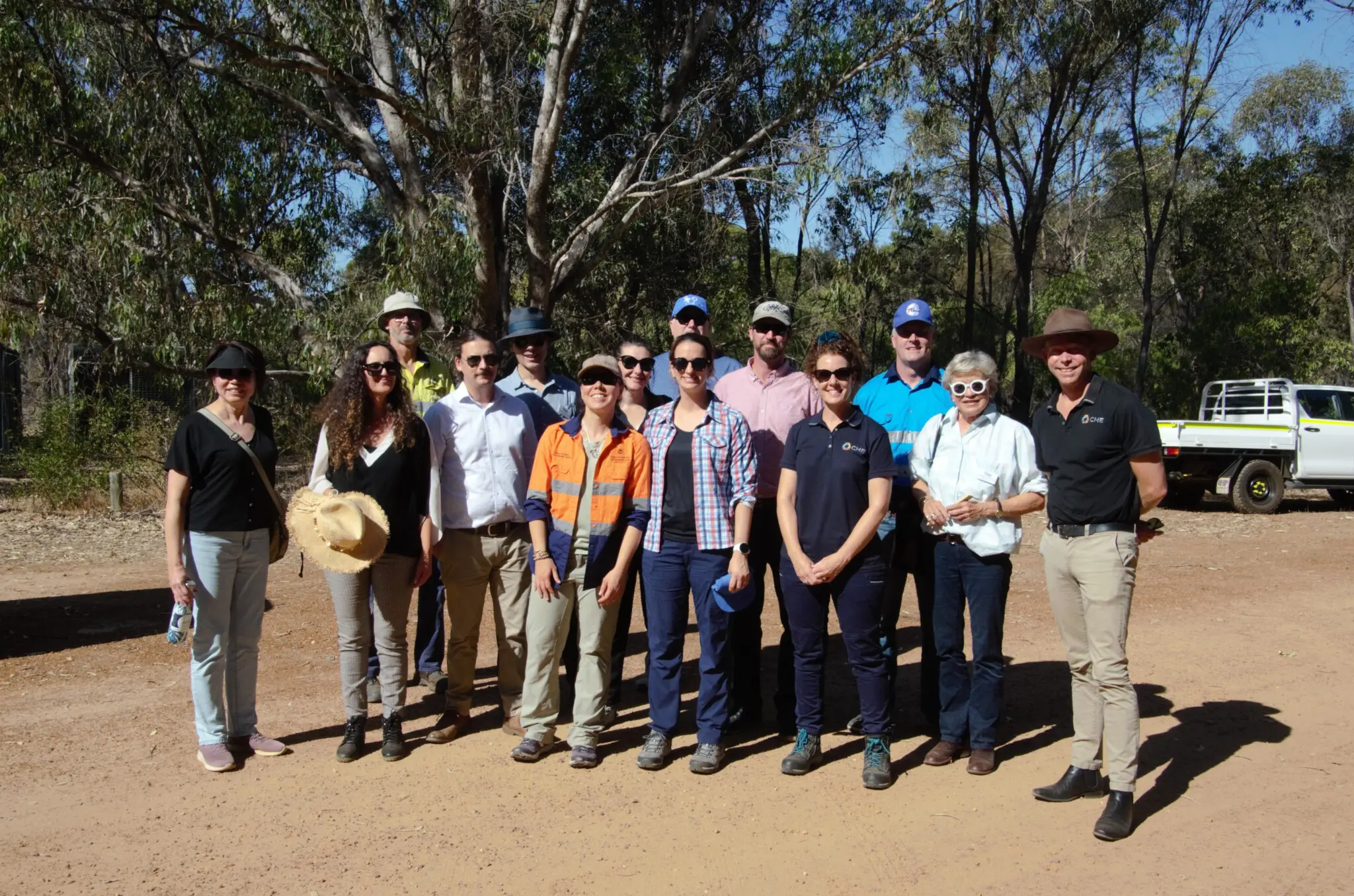“What do you do?”
Dinner party conversations are stifled by monologuers so my answer is purposely succinct. A taster. An hors d’oeuvre that, more often than not, sparks a hunger follow-up:
“I work in the world’s only research centre looking into what happens after a mine closes.”
On my one-year anniversary with CRC TiME, I contemplated my move from the public policy world into my first Cooperative Research Centre and first foray into the mining and resources sector. It’s been a steep learning curve peppered with acronyms and jargon, but with all the novelty comes that rare burst of energy – naïve, perhaps, but valuable nonetheless.
Here are a handful of personal reflections on what I’ve learned:

Cassandra Tolsma, Mine Rehabilitation Specialist for EnergyAustralia, explaining closure plans for Yallourn.
1. The starts are shiny and loud, the ends are dark and quiet.
The opening of a mine is a giant cause for celebration, while the tail end can peter out unnoticed. Most mines don’t close and the land not relinquished back to owners. Some go into care and maintenance mode and others shift to fully focus on closure-related activities.
2. Time moves fast and so do public expectations.
What’s agreed to at the start of a mine in the Closure Plan can be less than ideal at the end, many years later. The public expectations on which social license rests have drastically shifted. What you promised to do at the end of the mine lifecycle 50 years ago may now not be enough, or may now cost you twice as much.
3. The life of a mine doesn’t end at closure, but continues long after.
There’s an increasing need to transition the old mine site into a new purpose – a recreational lake, an adventure park, a tourist site – if it’s relevant and possible. The surrounding community want more than a close-and-leave mentality.
3. Communities are passionate and want to be a part of the solution.
The people in the surrounding areas are affected one way or another, whether having had their first job working for the mine, or have a business affected by the change of workforce needs when it closes. Leverage their local knowledge and interests by bringing them in to co-design and subsequent driving of the next steps.
4. Traditional Owners and Indigenous Knowledge can walk alongside and bolster Western scientific knowledge, and vice versa.
We must do this better, with equitable co-design and data sharing and ownership that Indigenous communities want and need. Country speaks and there are many ways to listen – if you’re not currently hearing Country, try another way.

Visiting Murujuga was a deeply profound experience.
5. Applied research should have an impact.
Time-consuming applied research resulting in deliverables that aren’t tailored for end users is knowledge wasted. Start with ‘What is needed?’ rather than ‘What do I want to achieve?’. Ensuring the research is translated for and accessed by end users – whether through format, language, mode or time – will hopefully lead to positive impact. Jargon-heavy reports aren’t enough.
6. Regional Australia is something to be very proud of.
The people, the stories, the connection to the land. Cities might feel like the engine rooms but the country is truly where the work happens. And the warmth from locals is precious – the connections are far stronger despite the patchy network signals.
There is much to learn beyond these. Thank you to my truly wonderful colleagues for making it a stellar year and I’m sure 2024 will be another cracker.

